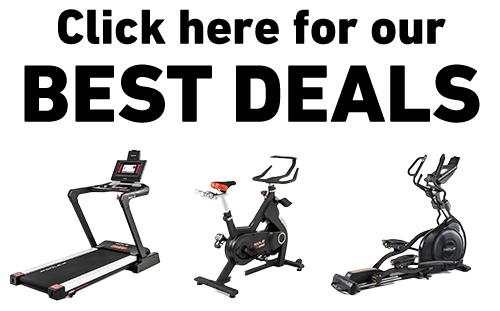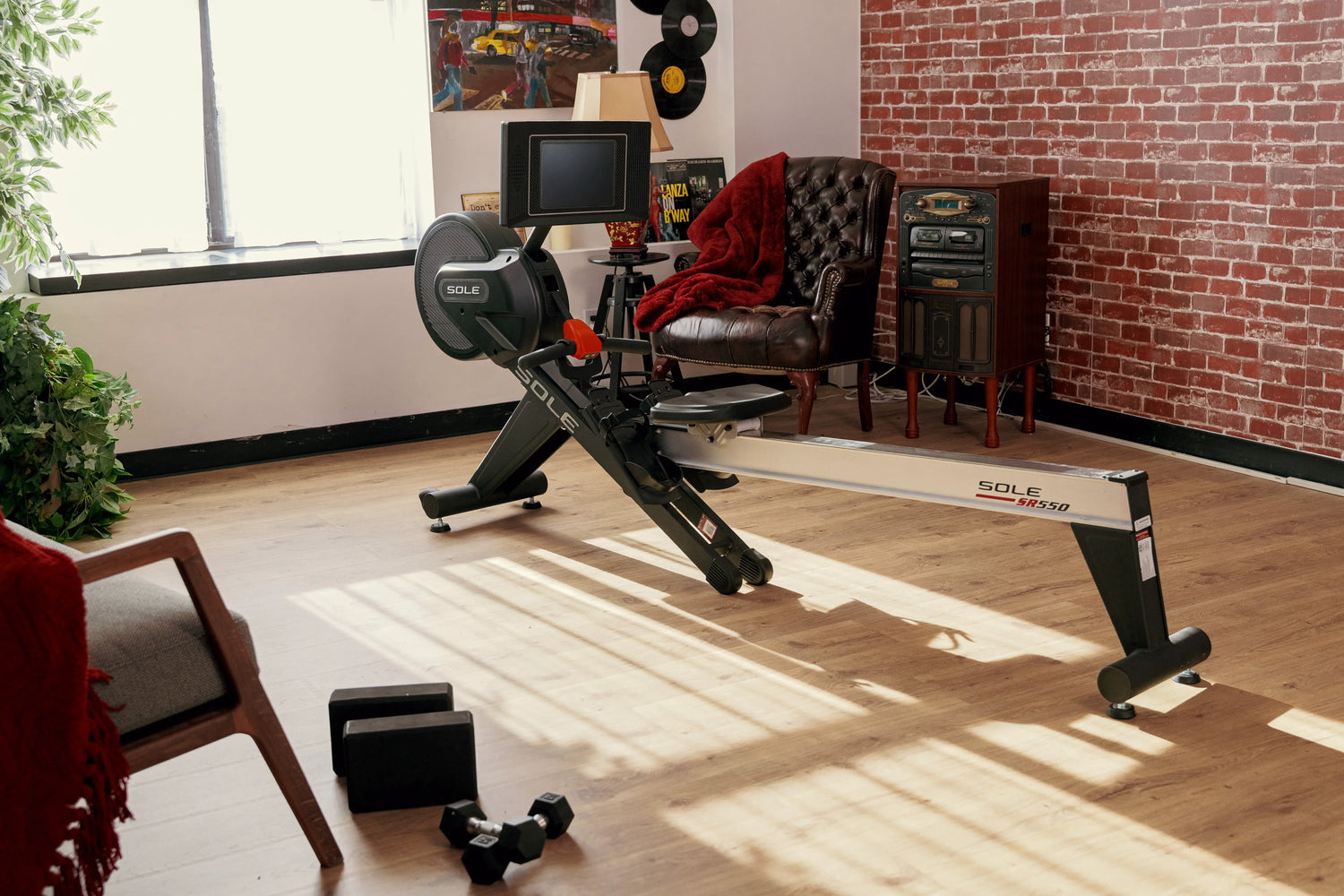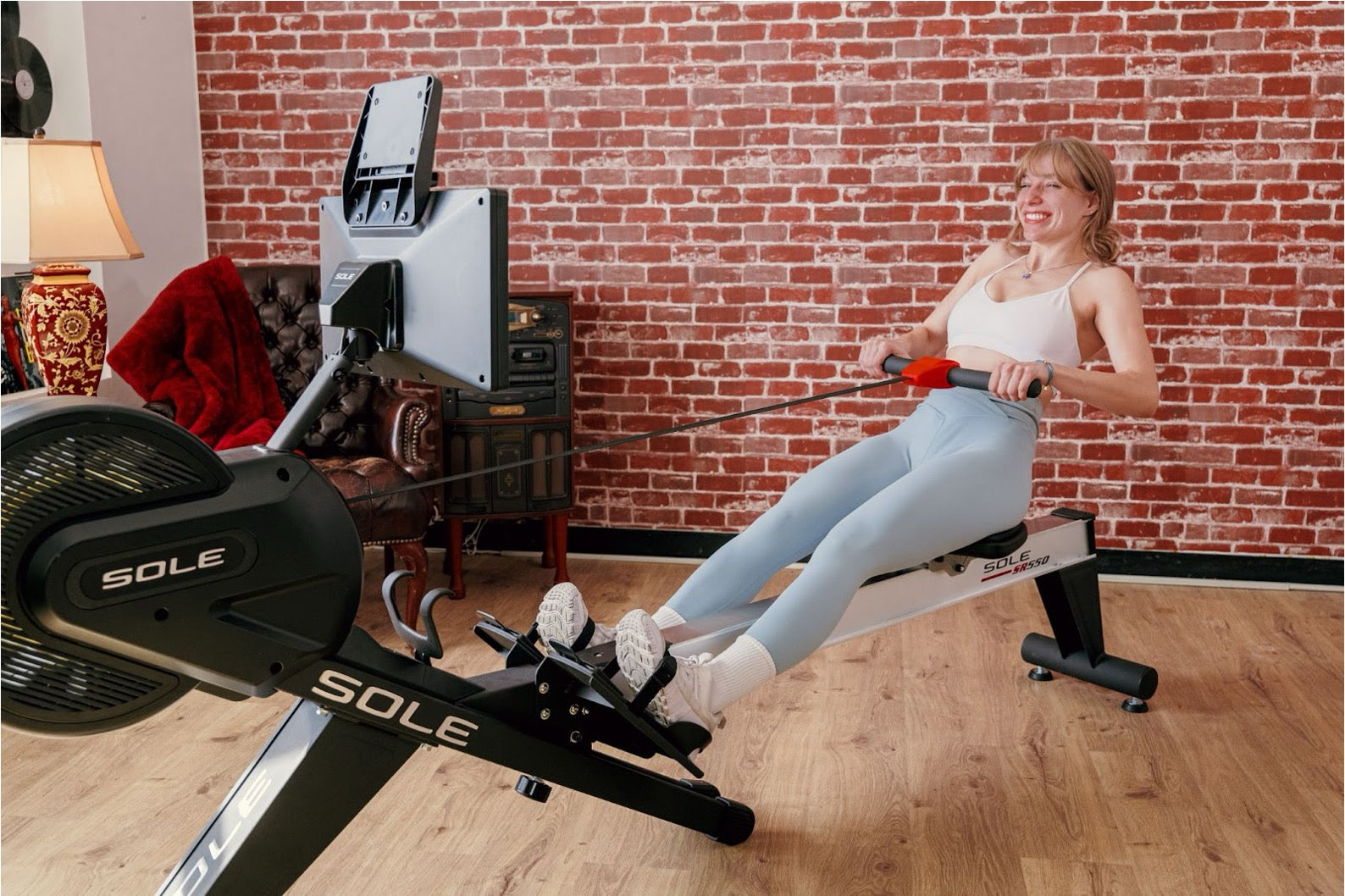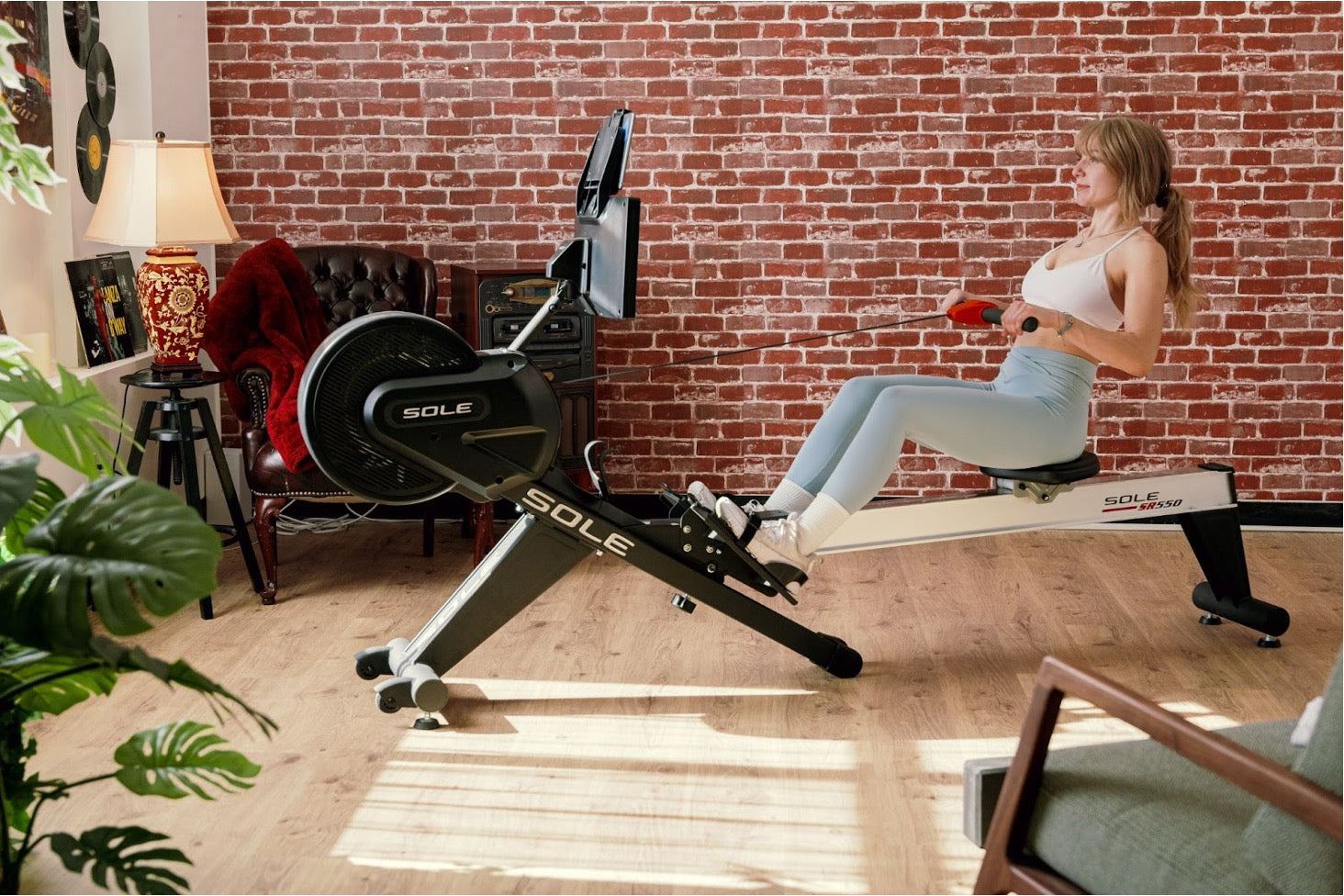Key Takeaways
- Rowing is a low-impact exercise that protects joints while improving cardiovascular health.
- Regular rowing builds muscle strength and endurance, which is crucial for seniors.
- Proper form and technique are essential to prevent injuries and maximize benefits.
- SOLE’s SR550 Rowing Machine's adjustable resistance is ideal for seniors starting at lower intensities.
Benefits of Rowing for Seniors
Boosts Cardiovascular Health
The repetitive motion of rowing increases heart rate, which strengthens the heart muscle over time. This is particularly important for seniors, as cardiovascular health tends to decline with age.
Rowing also assists in reducing blood pressure and improving circulation. This makes rowing a safe and effective way to maintain heart health without the high impact of running or jumping exercises.
Improves Muscle Strength and Endurance
Rowing is a full-body workout that engages major muscle groups, including the legs, core, back, and arms.
As we age, we naturally lose muscle mass, a condition known as sarcopenia. Rowing helps to combat this by building and maintaining muscle strength and endurance.
When you row, you work against resistance, which helps to build muscle. It's like lifting weights but without the heavy impact on joints.
This is beneficial for seniors who might struggle with traditional strength training exercises.
Regular rowing can help seniors maintain their independence by improving strength needed for daily activities.
Supports Joint Health
Joint pain and stiffness are common complaints among seniors. Fortunately, rowing is a low-impact exercise, meaning it puts minimal stress on the joints. This makes it an excellent choice for those with arthritis or other joint concerns.
Because rowing is performed in a seated position, it reduces the impact on the knees and hips, which are often problematic areas for older adults.
The smooth, gliding motion of rowing mimics the natural movements of the body, helping to maintain joint flexibility and reduce stiffness.
|
At SOLE, we're proud to offer top-quality exercise equipment designed for home and gym use. Our machines are built to meet the highest standards of durability and performance, making them ideal for fitness enthusiasts at any level. SOLE Products
|
Workout 1: Gentle Rhythm
This workout focuses on establishing a steady pace and getting comfortable with the rowing motion.
For seniors new to rowing or exercise in general, a gentle rhythm workout is a perfect starting point.
Warm-Up Techniques
Before jumping on the rowing machine, begin with a 5-minute warm-up that includes light stretching and slow rowing. Focus on your form, ensuring your back is straight and your core is engaged. This prepares your muscles and joints for the workout ahead.
Steady Pace Rowing
Once you’re warmed up, start rowing at a gentle pace. Aim for a consistent stroke rate that feels sustainable. Focus on your breathing and try to maintain a steady rhythm throughout the session.
Low Impact Intensity
Keep the intensity low to moderate. The goal here is not to exhaust yourself but to enjoy a smooth and rhythmic workout. This is perfect for improving endurance without overexerting yourself.
Workout 2: Building Endurance
Interval Training Methods
By alternating between periods of higher intensity and rest, you can improve cardiovascular health effectively. Start with a warm-up, then row at a moderate pace for two minutes.
Follow this with a one-minute sprint, where you increase your speed and effort. Repeat this cycle for 20 minutes. Adjust the intensity based on your comfort level.
Pacing for Seniors
For seniors, maintaining a moderate pace during the intervals is key. This means rowing fast enough to increase your heart rate but not so fast that you feel out of breath or exhausted.
Listen to your body and adjust as necessary. Over time, as your fitness improves, you can gradually increase the intensity of your intervals.
Recovery Between Intervals
Recovery is an essential part of interval training—during the rest periods, slow down your pace to allow your heart rate to return to a comfortable level.
Use this time to focus on deep breathing and proper rowing technique. This recovery phase helps prevent fatigue and prepares your body for the next interval.
Workout 3: Strength and Flexibility
This workout combines rowing with additional exercises to target different muscle groups.
Incorporating Resistance Bands
Resistance bands are a versatile tool that can be used alongside your rowing workout. After a warm-up, attach the resistance bands to a stable point and perform exercises like seated rows or bicep curls.
These exercises complement the rowing motion and provide additional strength training benefits.
Rowing with Core Engagement
While rowing primarily targets the back and legs, engaging your core can enhance the effectiveness of your workout. Focus on maintaining a strong core throughout each stroke.
This improves your posture and strengthens your abdominal muscles, contributing to better overall balance and stability.
Cooling-Down Stretches
After completing your workout, spend some time cooling down with stretches. Focus on the major muscle groups worked during rowing, such as the shoulders, back, and legs.
Stretching helps prevent muscle soreness and improves flexibility. Hold each stretch for about 15-30 seconds, breathing deeply to relax your muscles.
Safety Tips for Rowing
Safety should always be a priority, especially for seniors engaging in new exercise routines.
Proper Form and Technique
Using proper form is how you can avoid injuries and maximize the benefits of rowing. Sit up straight with your feet securely strapped into the footrests.
Begin each stroke by pushing with your legs, then lean back slightly while pulling the handle to your chest.
Reverse the motion to return to the starting position. Keeping your movements smooth and controlled is key to maintaining good form.
Listening to Your Body
Pay attention to how your body feels during and after each workout. If you experience any pain or discomfort, stop and assess the situation. Overexertion can lead to injuries, so taking a break when needed is essential.
Most importantly, understand the difference between normal fatigue and pain. While it's normal to feel tired after a workout, pain is a sign that something may be wrong.
Adjust the intensity of your workout based on how you feel and don't hesitate to take rest days when necessary.
Consulting a Healthcare Provider
Before beginning any new exercise routine, it's wise to consult with a healthcare provider. They can offer personalized advice based on your health status and any pre-existing conditions.
This is important for seniors, as certain health issues may require specific precautions or modifications to your workout routine.
Your healthcare provider can also help you set realistic fitness goals and provide guidance on how to achieve them safely.
Stay Active and Strong with SOLE Rower
By incorporating these rowing machine workouts into your routine, you can enjoy numerous benefits, including improved cardiovascular health, increased muscle strength, and enhanced joint flexibility.
The SOLE SR550 is an excellent option for seniors. The rowing machine features a higher seat height, making it easier to get on and off, which is beneficial for senior folks with mobility concerns. The machine also operates quietly due to its magnetic resistance system - meaning you’ll get a quiet exercise experience at home.
The intuitive display and straightforward controls make it user-friendly too, enabling seniors to check and select workout options effortlessly. Furthermore, the SR550 offers a range of programmed workouts without requiring a subscription so that seniors have the motivation to maintain a consistent fitness routine.
Check out the SR550 Rowing Machine now!
Frequently Asked Questions (FAQ)
Are rowing machines suitable for seniors?
Yes, rowing machines are suitable for seniors. They provide a low-impact, full-body workout that is gentle on the joints. But use proper form and start at a comfortable intensity level.
Always consult with a healthcare provider before starting a new exercise routine to ensure it's appropriate for your health condition.
What is a beginner-friendly rowing workout?
A beginner-friendly rowing workout involves starting with a gentle rhythm and focusing on steady pace rowing. Begin with a 5-minute warm-up, followed by 10-15 minutes of rowing at a comfortable pace. This helps build endurance and familiarity with the rowing motion.
How often should seniors use a rowing machine?
Seniors should aim to use a rowing machine 2-3 times per week, depending on their fitness level and health condition. This frequency allows for adequate recovery time while still providing consistent exercise benefits.
Balance rowing with other forms of exercise, such as walking or strength training, to ensure a well-rounded fitness routine.
What are the health considerations for seniors?
When using a rowing machine, seniors should consider any pre-existing health conditions, such as arthritis or cardiovascular issues. Use proper form and start at a low intensity to prevent injury.
Are there rowing machines suitable for seniors?
Yes, the SOLE SR550 rowing machine is perfectly suited for seniors—featuring gentle starting resistance, stable design for easy mounting, and a clear 10.1-inch touchscreen display that tracks your comfortable, joint-friendly workouts.




Leave a comment
This site is protected by hCaptcha and the hCaptcha Privacy Policy and Terms of Service apply.